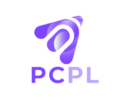
Cost Dynamics of New Product Development in 2024
The cost of developing a new product can vary significantly, ranging from $20,000 to $100,000 or more. This wide range exists due to the varying complexity of different software products. More complex and feature-rich products demand additional expertise and labor, thereby driving up development costs.
However, once you’ve defined your product idea and outlined the desired functionality, you can refine your cost estimates more accurately. This blog post aims to guide you through the process of estimating development and design costs while also offering valuable tips for minimizing expenses without compromising quality or jeopardizing your product’s chances of success.
Innovation is the vital force behind any industry, driving growth, competitiveness, and relevance in an ever-evolving marketplace. However, behind every groundbreaking product lies an intricate process of development, one that demands not only creativity and ingenuity but also substantial financial investment. 2024 is marked by both exciting opportunities and formidable challenges, with costs playing a central role in shaping the trajectory of innovation.
The Changing Scenario of Product Development
In recent years, product development has witnessed significant transformation fueled by advancements in technology, changing consumer preferences, and a shifting regulatory environment. The emergence of artificial intelligence, machine learning, and automation has revolutionized various stages of the product development lifecycle, streamlining processes, enhancing efficiency, and unlocking new possibilities.
The rise of agile methodologies and collaborative platforms has facilitated seamless communication and collaboration across geographically dispersed teams, accelerating the pace of innovation. However, amidst these advancements, the cost of new product development has emerged as a critical consideration for businesses across industries.
Factors Influencing the Cost of New Product Development
- Research and Development (R&D) Expenses- The initial phase of product development involves extensive research, conceptualization, and prototyping, necessitating investment in skilled manpower, equipment, and resources.
- Technology Infrastructure- The adoption of cutting-edge technologies such as augmented reality, virtual reality, and the Internet of Things (IoT) entails substantial investment in infrastructure, software licenses, and specialized expertise.
- Regulatory Compliance- Stricter regulations governing product safety, environmental sustainability, and data privacy necessitate compliance measures, adding to the overall cost of development and certification.
- Talent Acquisition and Retention- The demand for skilled professionals in fields such as data science, software engineering, and user experience design continues to outstrip supply, driving up labor costs and intensifying competition for top talent.
- Supply Chain Disruptions- The global supply chain disruptions triggered by events such as the COVID-19 pandemic have underscored the importance of resilience and flexibility in supply chain management, with businesses investing in risk mitigation strategies and alternative sourcing options.
- Marketing and Launch Expenses- A successful product launch requires strategic marketing campaigns, promotional activities, and distribution channels, all of which entail additional expenditures.
Strategies for Cost Optimization in New Product Development
- Lean Product Development
Embracing lean principles and agile methodologies can help streamline the development process, minimize waste, and accelerate time-to-market.
- Cross-Functional Collaboration
Fostering collaboration between R&D, marketing, and supply chain teams can improve alignment, enhance communication, and drive efficiency throughout the product lifecycle.
- Outsourcing Non-Core Activities
Outsourcing non-core activities such as manufacturing, logistics, and customer support can help reduce overhead costs and focus internal resources on core competencies.
- Prioritizing MVPs (Minimum Viable Products)
Adopting a phased approach to product development and launching MVPs allows businesses to gather feedback, validate assumptions, and iterate based on market response, thereby minimizing upfront investment.
- Leveraging Open Innovation
Collaborating with external partners, universities, and research institutions can provide access to specialized expertise, novel technologies, and alternative funding sources, mitigating the burden of R&D expenses.
Conclusion
While the cost of new product development in 2024 presents formidable challenges, it also offers immense opportunities for innovation and growth.
PCPL enables you to bring your software vision to life, whether by enhancing internal capabilities or partnering with experienced professionals for project execution. Backed by a proven history of delivering advanced solutions to established brands and startups, our expertise guarantees cost-effective, top-tier results customized to meet your specific needs.
